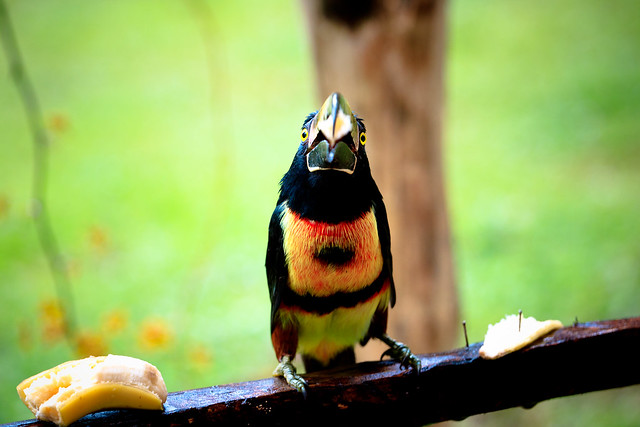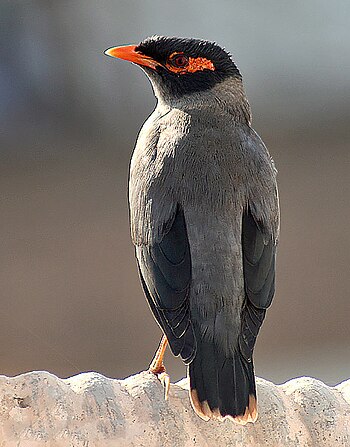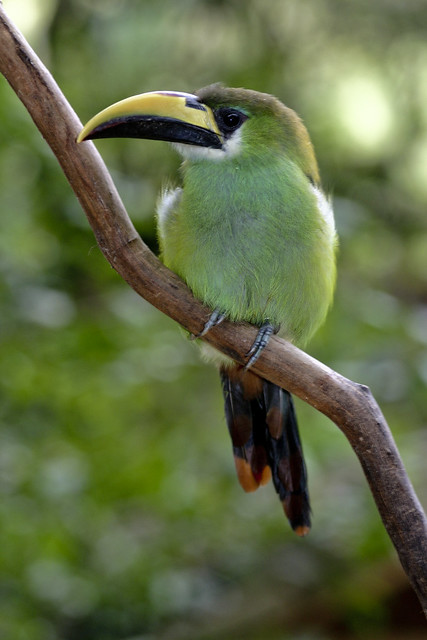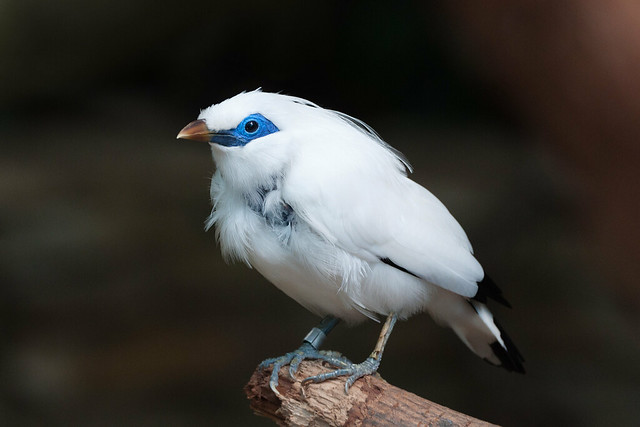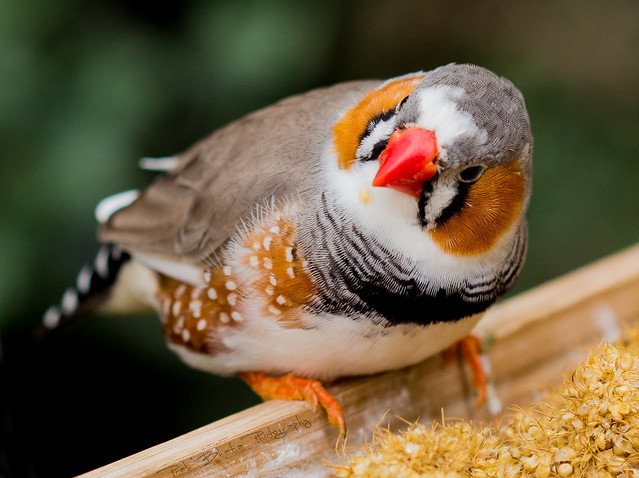(Original Title: Rainforest Birds - Eclectus Parrot)
Bird Name:
Latin Name:
Eclectus roratus
Status:
Least Concern
Scientific Classification:
Kingdom: Animalia
Phylum: Chordata
Class: Aves
Order: Psittaciformes
Family: Psittacidae
Genus: Eclectus
Species: E. roratus
General Information:
The Eclectus Parrot, also known as the Red-sided Eclectus, is a native species of northeastern Australia and the nearby Indonesian and Pacific islands. It is noted for its bright colored feathers, which are used by native tribes for decorations, and its talking ability. These attributes have made it a popular pet.
Physical Description:
On average it is about 14 inches in length and weighs in the range of 250 - 550 g. The Eclectus is known for its high degree of sexual dimorphism. The male is bright green with an orange-yellowish upper mandible and black lower mandible. Its sides and underwings are red, with blue on the sides of its wings. The female is mostly red with an all-black bill and purple on its belly. There are ten recognized subspecies of this bird, each with different color schemes compared to the nominate race.
Diet:
The Eclectus feeds on fruits, flowers, and seeds. Its digestive system is said to be extremely efficient in absorbing nutrients, and its intestinal tract is longer than average to accommodate the high fiber foods it requires.
Habitat:
The Eclectus occurs in rainforests and woodlands. Its range includes the Cape York Peninsula of Australia, the Solomon Islands, New Guinea, and several Indonesian islands, including the Molucca group. It nests in holes in trees, among rocks, and among termite mounds.
Reproduction:
A female Eclectus Parrot usually lays 2 eggs per clutch, and incubates them for about 30 days, during which time the male feeds her. The young fledge after about 70 - 80 days.
Eclectus are remarkable parrots and ideally suitable as a pet. Whenever taught properly, they're capable of cognitive behavior from a really young age.
The capability of the Eclectus to speak with humans is because of their extremely inquisitive nature, a feature highly linked to their existence within the rainforest cover. This habitat is really a rich environment needing a heightened visual as well as audible intellect to understand.
The
Eclectus
has developed the complex breeding tradition in this crowded vegetative environment, resulting in communal reproduction where uncles and aunties assist rear young inside a crèche -like situation. This discussing and caring function of the Eclectus makes them normally the perfect pet.
Whenever treated in a likewise caring and smart way they will rapidly learn to communicate cognitively. Eclectus additionally prefer a relaxed environment and have a powerful capability to notice modifications within their normal environment.
These highly smart birds are really cartoon and love to take part in daily activities and in doing this, will rapidly turn out to be familiar with a daily routine. Eclectus could be kept with other parrot species although it is very important that any brand new bird is launched within the correct style. This involves providing one-on-one attention with the unique bird and as almost as much as feasible, maintaining it's normal daily regimen.
Regular and constant training form a fundamental element of the Eclectus development along with the correct love as well as attention, this extremely intelligent bird makes a superb pet.
Even though Eclectus is a lovely chicken both physically as well as temperamentally, its personality previously has been misunderstood. This particular species has been characterized as boring, boring, lethargic, shy as well as stupid. What the informal observer is viewing, nonetheless, is the Eclectus Parrot's reaction to tension. When confronted by unfamiliar situations or even strangers they deep freeze and wait. Within familiar surroundings with folks they know they're garrulous, highly animated, interested, affectionate and fun.
All Eclectus subspecies share comparable behaviors and personas but with slight variations, for instance, Solomon Island, as well as New Guinea Eclectus, are a lot more docile compared to big domineering Australian Eclectus, so when hand-reared are considered to create the very best pets. Even though personality of chickens is distinct from penis Eclectus, it is questionable regardless of whether hens or pricks make much better pets.
The actual hen is a lot more intense than the cock. Whenever nesting, hand-reared hens tend to be much more aggressive than aviary-bred chickens. Both make similarly great pets, however, hens are a lot more likely to create hormonally related behavioral.
Eclectus possess a wide and most uncommon range of sounds, such as a soft bell or gong shades, coos, whistles, comic konks and squeals. The majority are really pleasant towards the ear. Nonetheless, they likewise have the capability to scream or even indulge in raucous screeching whenever frightened, disturbed or even excited. Eclectus Parrots additionally voice words and phrases really clearly.
